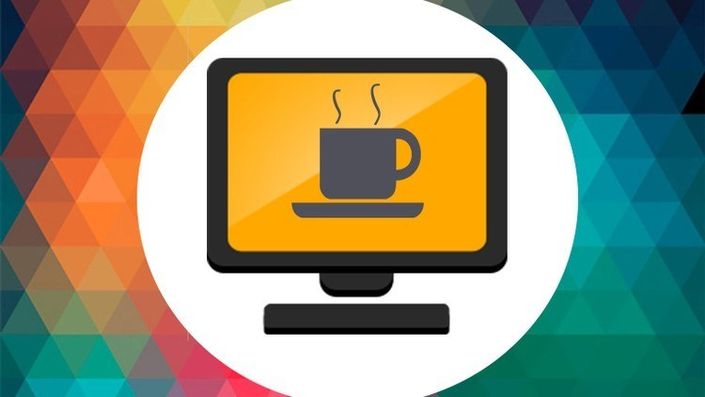
Java Programming Tutorial
teaching programming by example and learning programming is by doing
Watch Promo
Java is a great programming language. In the turbulent development of computer technology, Java is everywhere and extremely powerful.
In 1995, Java Applet enabled Web pages to deliver exciting and interactive multimedia content, which facilitating the Web flourishing.
Then with the development of the Web, the Web application became the mainstream way of developing large-scale application.
Java relied on "Compile once, run everywhere" feature to support the cross-platform capabilities which is required by Internet applications and becomes the mainstream language for server-side development.Java EE is still the most important enterprise development platform of the server-side.
Now we are in the era of mobile Internet, and Java is still the deserved leading programming language.
Applications such as Android development, cloud computing, big data, the Internet of Things, and wearable devices all require a distributed computing environment that can be cross-platform and cross-device. We will still see the key role of the Java programming language.
Java is a classic object-oriented programming language with elegant and concise syntax and a rich and useful class library which allows programmers to focus as much as possible on problem solving in the business world.
Many open source projects and prototype systems in research are implemented in Java. The language is so widely used ,it will directly help students in their future research and work. This tutorial has a comprehensive knowledge, clear architecture, a large selection of examples and a large number of well-designed exercises.
This tutorial takes a foundation-first approach, starting with the basics of programming, gradually introducing object-oriented thinking, and finally introducing the application framework, which is very suitable for students who are getting started with programming.
In addition, the emphasis on problem-oriented teaching methods is the key feature of this tutorial, which is the teaching method I have been following in this course.
The best way to teach programming is by example , and the only way to learn programming is by doing .
Teaching students to learn programming courses through vivid and practical examples, avoid boring grammar learning which allowing students to apply what they have learned.
The most important part of the programming course is to develop students' computational thinking. Mastering the thinking of programming, you can easily learn and use other programming languages.
Finally, I wish everyone a happy study.
Your Instructor

大家好,我是Andrew,一名在IT届摸爬滚打10年有余的IT老兵。
职业生涯至今,我在多家公司都有过从业经历。不论是大型跨国企业比如Amazon,华为,爱立信,还是小微初创公司,都曾留下过的我的足迹。
职业生涯至今,我历任过程序员,架构师,全栈工程师,技术经理,解决方案架构师等诸多角色。过往经历在造就了我丰富职业生涯阅历的同时也让自己掌握了诸多的IT技能点以及方法论。这些技能栈帮助我由点及面的形成了自己对于整个IT行业的通盘理解,最终让我萌生了分享自己所学所得的想法,并终于在Udemy上开始教授相关课程。
至今,我已经在Udemy上发布了超过10门课程,拥有超过4000名学同学先后学习了这些课程。这些课程广受学生好评,同学们积极的反馈给了我继续努力的动力。
在未来,我会不断发布新的课程,力求能够帮助到更多的同学。
谢谢大家的支持!
Hi everyone, my name is Andrew, an IT veteran who has been in the IT industry for more than 10 years.
So far, I have worked in many companies. Whether it is a large multinational company such as Amazon, Huawei, Ericsson, or small and micro start-up companies, I have left my footprint.
I have served as a programmer, architect, full-stack engineer, technical manager, solution architect, and many other roles. Past experience has not only created a rich career experience but also allowed me to master many IT skills and methodologies. These skill stacks helped me form a comprehensive understanding of the entire IT industry from point to point, and finally gave me the idea of sharing what I learned, and finally started teaching related courses on Udemy.
So far, I have published more than 10 courses on Udemy, and more than 4000 students have studied these courses. These courses are well received by the students, and the positive feedback from the students gave me the motivation to continue working hard.
In the future, I will continue to release new courses, and strive to help more students.
Thanks everybody!
Course Curriculum
-
PreviewJava Introduction (2:59)
-
StartChapter Object (1:05)
-
PreviewWhat Is Computer (11:44)
-
PreviewProgramming Language Introduction (4:41)
-
StartOperating System (4:03)
-
PreviewBrief Introduction Of Java Programming Language (3:54)
-
StartThe Java Language Specification, API, JDK, and IDE (5:29)
-
PreviewA Simple Java Program (5:04)
-
PreviewCreating,Compiling And Executing a Java Program - part 1 (4:39)
-
StartType Your First Program By Using Text Editor (2:13)
-
StartInstall JDK And Use It To Compile And Run Our First Java Program (3:00)
-
StartProgramming Styels And Documentions (3:46)
-
StartCreate First Java Program Using Intellij IDEA (9:58)
-
StartChapter Introduction (0:57)
-
PreviewWriting a Simple Program (9:20)
-
StartReading Input from the Console (5:36)
-
StartNamed Constants (1:47)
-
StartNaming Conventions (1:42)
-
StartNumeric Data Types and Operations (8:44)
-
StartNumeric Literals (4:41)
-
StartEvaluating Expressions and Operator Precedence (2:39)
-
StartCase Study: Displaying the Current Time (1:28)
-
StartAugmented Assignment Operators (0:58)
-
StartIncrement And Decrement Operators (2:58)
-
StartNumeric Type Conversions (3:29)
-
StartSoftware Development Process - Part 1 (3:54)
-
StartSoftware Development Process - Part 2 (9:34)
-
StartCommon Errors And Pitfalls (5:31)
-
StartCase Study: Counting Monetary Units (3:43)
-
StartChapter 2 Summary (3:25)
-
StartChapter Objectives (1:16)
-
StartIntroduction (2:02)
-
StartBoolean Data Type (3:31)
-
PreviewIf Statements (4:42)
-
StartTwo Way If Else Statements (0:50)
-
StartNested If And Multi-Way If-Else Statements (1:53)
-
StartCommon Errors And Pitfalls (4:17)
-
StartLogical Operators (7:01)
-
StartCase Study - Logical Operators (6:08)
-
StartCase Study - Generating Random Numbers (2:43)
-
StartCase Study - Determining Leap Year (1:05)
-
StartSwitch Statements (7:59)
-
StartConditional Expressions (4:12)
-
StartOperator Precedence and Associativity (3:09)
-
StartDebugging - 1 (3:35)
-
StartDebugging - 2 (5:01)

